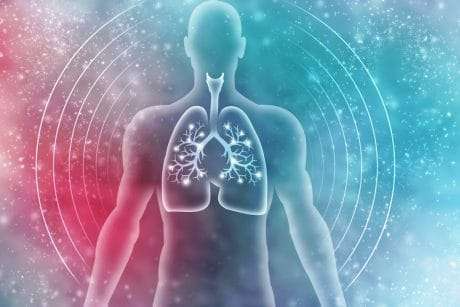James Nestor, author of “Breath: The Science of a Lost Art,” says “You can’t truly be healthy unless you’re breathing correctly.” In fact, certain breathing techniques can reduce stress, regulate emotions, prevent insomnia, influence weight and improve athletic performance.
Breathing is a natural reflex of the central nervous system that occurs roughly 25,000 times a day. Though it happens automatically, people are paying closer attention to how they’re breathing as we navigate these uncertain times.
In March the World Health Organization declared the COVID-19 outbreak a global pandemic and many states issued stay-at-home orders. Cancelled plans, indefinite isolation, panic over scarce resources and media overload has led to increased anxiety—which has a strong association with shortness of breath and other respiratory symptoms.
Breath better with these exercises
In addition to taking deep breaths, inhaling through your nose and exhaling through your mouth, a recent New York Times article, “Breathe Better with These Nine Exercises”, recommends the following techniques to help relieve symptoms of anxiety and improve your health at cellular level:
Clear up congestion
If you’re feeling congested try this clearing exercise. Begin by sitting up straight. Gently inhale and exhale through the nose and then pinch both nostrils shut. Next, gently shake your head up and down or from side to side until you feel the need to breathe. Take a slow breath in through the nose (or pursed lips if the nose is still congested). Breathe calmly for 30 seconds to a minute and repeat five times.
Breathe from the belly
If you’re feeling anxious, this breathing technique can help lower your cortisol level, heart rate and blood pressure. Begin by lying on your back with your knees bent. Place one hand on your stomach and the other on your chest. Next, breathe in slowly through the nose. You should notice the hand on your stomach rise as your stomach expands. The hand on your chest should not move. Next, slowly exhale through the nose or pursed lips and feel your belly move down to its original position. Repeat five to ten minutes.
Get rolling
When the muscles in your upper body are chronically tight, they can restrict normal breathing. Massaging the upper body with a tennis or massage ball can help loosen, lengthen and relax the muscles. Get rolling and breathe easier with these four techniques:
Pectoral roll
Stand facing a wall and place the ball under your collarbone at the sternum. Lean against the wall and slowly roll the ball toward your right shoulder and back again along the valley below your clavicle. Do this several times and then repeat on the left.
Intercostal roll
Stand with your right side to the wall, raise your right arm overhead and place your palm on the wall. Place the ball under your armpit at the top of your ribs. Next, lean into the wall and gently rock back and forth. Lower the ball an inch and repeat. Continue down your side, massaging the intercostal muscles between your ribs, until you reach your lower ribs. Repeat on the left.
Upper back roll
Stand with your back to the wall and place the ball at the top of your trapezius (near the center of your shoulder blade) and lean into the wall. Next, gently roll the ball along the outer edge of the shoulder blade by bending and straightening the knees and then lifting and lowering the heels. This technique should trace along the area where a tank top strap would be. Repeat on the other side.
Neck release
Lay down on your back with a yoga block or thick book under your head. Turn your head to the right and place the ball on your upper neck, right behind your ear. Take five deep breaths here. Then gently nod your head yes three or four times, then shake your head no three or four times. Repeat on the left.
Perfect your posture
Poor posture contributes to breathing pattern dysfunction, restricts the diaphragm and slows down blood flow and digestion. These next exercises stretch the legs, lengthen the back and open the shoulders to help you draw the shoulders back and decompress the spine.
Cat and cow
These two yoga positions can help improve posture, strengthen the spine and relieve stress. Begin with your hands under shoulders and your knees under hips. Drop your belly as you inhale, press the chest forward and look up. Tuck your chin toward the chest and round your spine as you exhale. Flow between these positions for three to five breaths, following your breath.
Wide-legged forward fold
Stand with your feet wider than hips distance (about four feet) and turn your toes inward. Interlace your hands behind your back or hold onto a towel or yoga strap. Inhale, open the chest and bring the palms closer together. As you exhale, fold forward and allow your arms to hang overhead. Stay here for five to ten breaths.
Supine spinal twist
First,lie on your back and hug your knees into your chest. Take a few deep breaths. Next, extend your arms out in opposite directions making a T shape. As you exhale, lower your knees to the right, keeping both shoulder blades on the floor. If you wish, you can deepen the twist by looking over your left shoulder. Take several breaths here, inhale and move the knees back to center, exhale and lower them to the left and take the twist in the other direction.
For more information about breathing techniques or to schedule an evaluation call Jason Ferine Physical Therapy at 424-365-2083. We are firm believers in the healing power of human touch and focus our treatments around hands-on manual therapy, strength training, yoga, exercise and acupuncture.



